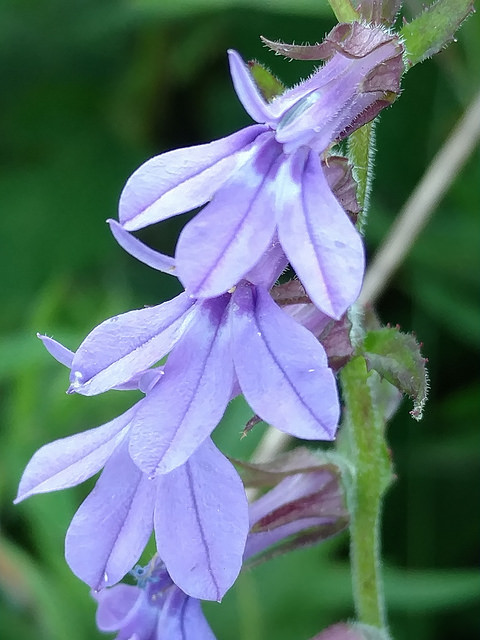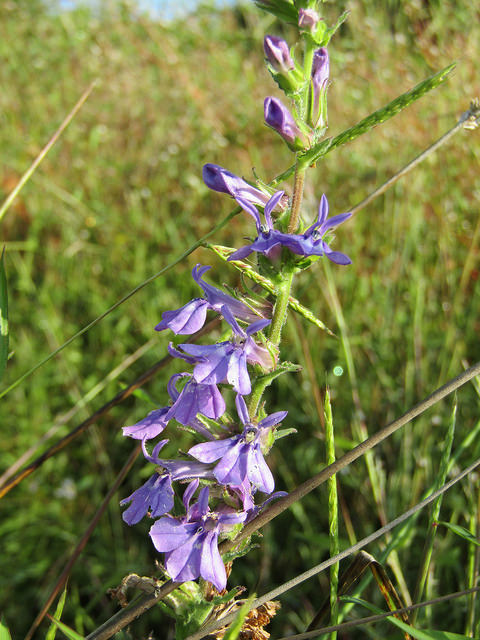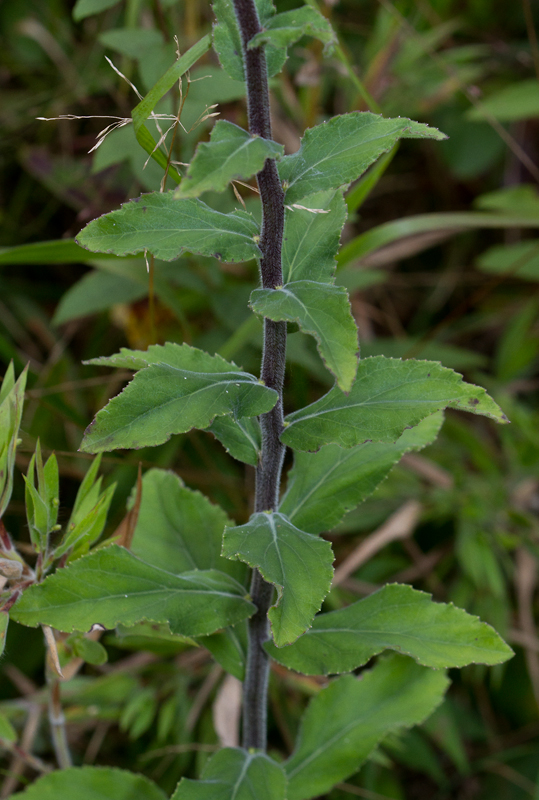Map Snapshot


















150 Records
Description
Identified by downy stem, basal leaf shape, flower shape and size, and white center to flowers. Great Blue Lobelia flowers have stripes on the inflated tube below, no white center to flowers, larger flowers, smooth stem. Blooms July-October.
Where To Find
Mainly found in forests and in disturbed areas, such as along roadsides. Can thrive in wet or dry conditions, sun or shade.
Seasonality Snapshot
Source: Wikipedia
| Lobelia puberula | |
|---|---|

| |
| Scientific classification | |
| Kingdom: | Plantae |
| Clade: | Tracheophytes |
| Clade: | Angiosperms |
| Clade: | Eudicots |
| Clade: | Asterids |
| Order: | Asterales |
| Family: | Campanulaceae |
| Genus: | Lobelia |
| Species: | L. puberula
|
| Binomial name | |
| Lobelia puberula | |
Lobelia puberula, or downy lobelia, is a perennial herbaceous wildflower in the Bellflower family (Campanulaceae) native to eastern and south central United States.[1] It is the most common blue-flowered Lobelia in the Southeast.[2] It grows in mesic (moderate moisture) to hydric (moist) habitats in sun or partial shade.[3][4]
Description
[edit]Downy lobelia is a perennial herb that grows up to 2.5 ft (1 m) tall. Leaves are simple with a toothed margin. The flowers are blue to violet, five-lobed, and bloom from July to October.[5]
Lobelia puberula is similar to two other Lobelia species in to the Eastern United States, Lobelia inflata (Indian tobacco) and Lobelia siphilitica (great lobelia); all display the characteristic "lip" petal near the opening of the flower and the "milky" liquid the plant excretes.[6]
References
[edit]- ^ "Loeblia puberula". County-level distribution map from the North American Plant Atlas (NAPA). Biota of North America Program (BONAP). 2014. Retrieved 23 June 2018.
- ^ Spaulding, Dan; Barger, T.Wayne (2016). "Keys, distribution, and taxonomic notes for the Lobelias (Lobelia, Campanulaceae) of Alabama and adjacent states" (PDF). Phytoneuron. 2016–76: 1–60. Retrieved 2018-06-23.
- ^ Missouri Plants
- ^ "Lobelia puberula". Germplasm Resources Information Network. Agricultural Research Service, United States Department of Agriculture. Retrieved 21 January 2018.
- ^ North Carolina Wildflowers
- ^ Caruso, C. M.; Peterson, S. B.; Ridley, C. E. (2003), "Natural selection on floral traits of Lobelia (Lobeliaceae): spatial and temporal variation", American Journal of Botany, 90 (9): 1333–40, doi:10.3732/ajb.90.9.1333, PMID 21659233



















